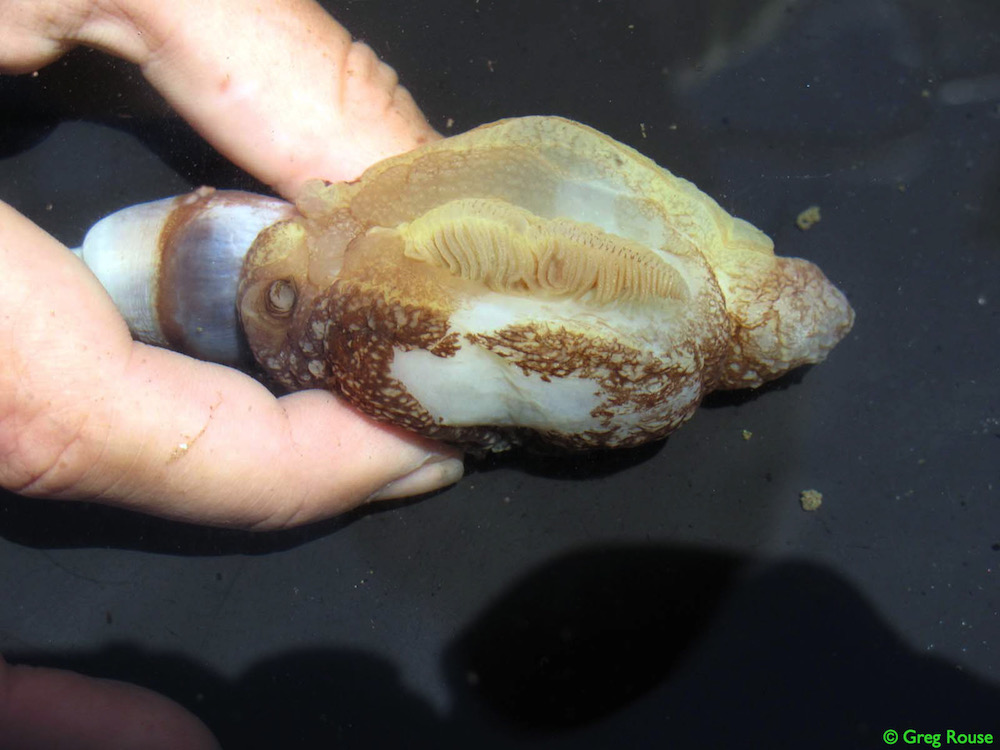What the Heck? Odd, Slimy Sea Creature Defies Explanation

A beachgoer recently came across a bizarre sight on the California shore: a decaying white, black and purple blob covered with sand.
Intrigued, the person, who goes by the Reddit handle xxviiparadise, snapped two photos of the creature and posted them online, asking, "Can anyone tell me what this is? Other than an organ?"
It's difficult to say, but the mysterious beastie is likely a sea hare, sidegill or limpet, marine biologists told Live Science. [In Photos: Spooky Deep-Sea Creatures]
The perplexing creature — discovered in Leo Carrillo State Park in Malibu — weighed about 7 lbs. (3 kilograms) and measured about 5 inches (13 centimeters) across, xxviiparadise said in the post.
"Because of the animal's decomposition, it is difficult to be certain what this animal may have been," John Hyde, a program leader of fisheries genetics at the National Oceanic and Atmospheric Administration's Southwest Fisheries Science Center in La Jolla, California, told Live Science in an email. "However, it does resemble a black sea hare (Aplysia vaccaria) that are fairly common in this area."
Sea hares, a group of sea slug species,fall within the class of gastropoda. If the strange animal were a black sea hare, that could explain its large size: A. vaccaria is the largest gastropod in the world — it can weigh as much as 30 lbs. (13.6 kg) and grow as long as 29 inches (75 cm), according to the Aquarium of the Pacific in Long Beach, California.
But not everyone is on board with this interpretation.
Get the world’s most fascinating discoveries delivered straight to your inbox.
"I am sure it is not a sea hare," Greg Rouse said in an email to Live Science. Rouse is a professor of marine biology at Scripps Institution of Oceanography at the University of California, San Diego.
The pictures show that the creature has a rim, and "sea hares are pretty soft," Rouse said. "They do have an internal shell — it could be that — but the more likely explanation for me was the sidegill."
If it's a sidegill (another type of sea slug), it's probably Pleurobranchaea californica, Rouse said.
P. californicais earth-toned: It is colored with light-brown, darker brown and small whitish patches, according to the Sea Slug Forum. It has a large gill on its right side (hence the name, sidegill, although the gill is not visible in the pictures), and a broad and muscular foot that helps it move.
These medium-to-large slugs usually live in deep water, from about 10 feet to 1,200 feet (3 to 400 meters) below the water's surface, where they voraciously prey on invertebrates such as worms and fish, including their own kind, making them cannibals, according to the Sea Slug Forum.
Trawling data suggests that P. californica eggs hatch during midsummer, mature during the fall and reproduce during the winter months, according to Slug City, a website maintained by Rhanor Gilette, an emeritus professor of molecular and integrative physiology at the University of Illinois. If this is the case, then perhaps the creature xxviiparadise saw was a young sidegill. [Marine Marvels: Spectacular Photos of Sea Creatures]
Or, it could be a Megathura crenulata, more commonly known as the great keyhole limpet, which lives along the coast from Southern California to Baja California, Mexico, according to Sea Life Base. These limpets can grow up to 5 inches (12.5 cm) across and have a small shell on the left side of their bodies.
"The thing that made me think that it might not be a sidegill is that there was black pigmentation," Rouse said. "That's when I thought maybe it's a keyhole limpet. But again, it's kind of bloated and you can't see the shell in the picture because it would have been on the left-hand side."
In all, Rouse said the creature is likely a sidegill, even though he's "never heard of it getting to 7 pounds, but it's hard to see what the scale of this picture is, of course."
Whatever the answer, the biologists agreed on one issue: the round, purple parts bulging out of the creature are likely its gut, which has bloated since its death, they said. They also added a note to beachgoers: Next time you photograph a strange, dead critter, put an object next to it for size comparison.
Original article on Live Science.

Laura is the managing editor at Live Science. She also runs the archaeology section and the Life's Little Mysteries series. Her work has appeared in The New York Times, Scholastic, Popular Science and Spectrum, a site on autism research. She has won multiple awards from the Society of Professional Journalists and the Washington Newspaper Publishers Association for her reporting at a weekly newspaper near Seattle. Laura holds a bachelor's degree in English literature and psychology from Washington University in St. Louis and a master's degree in science writing from NYU.



